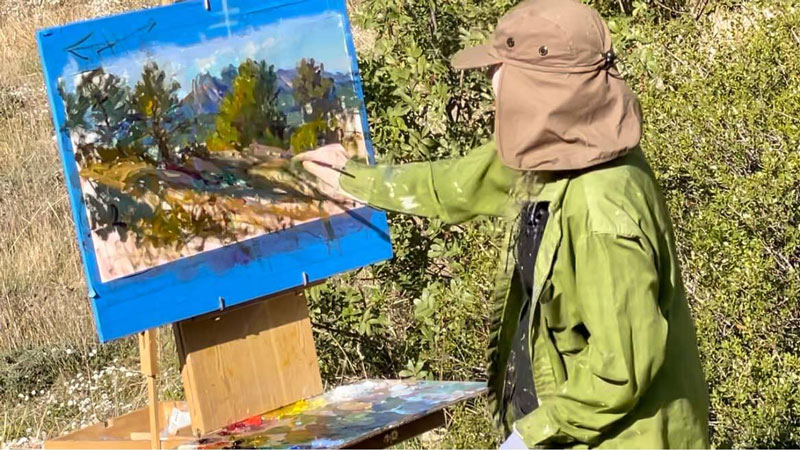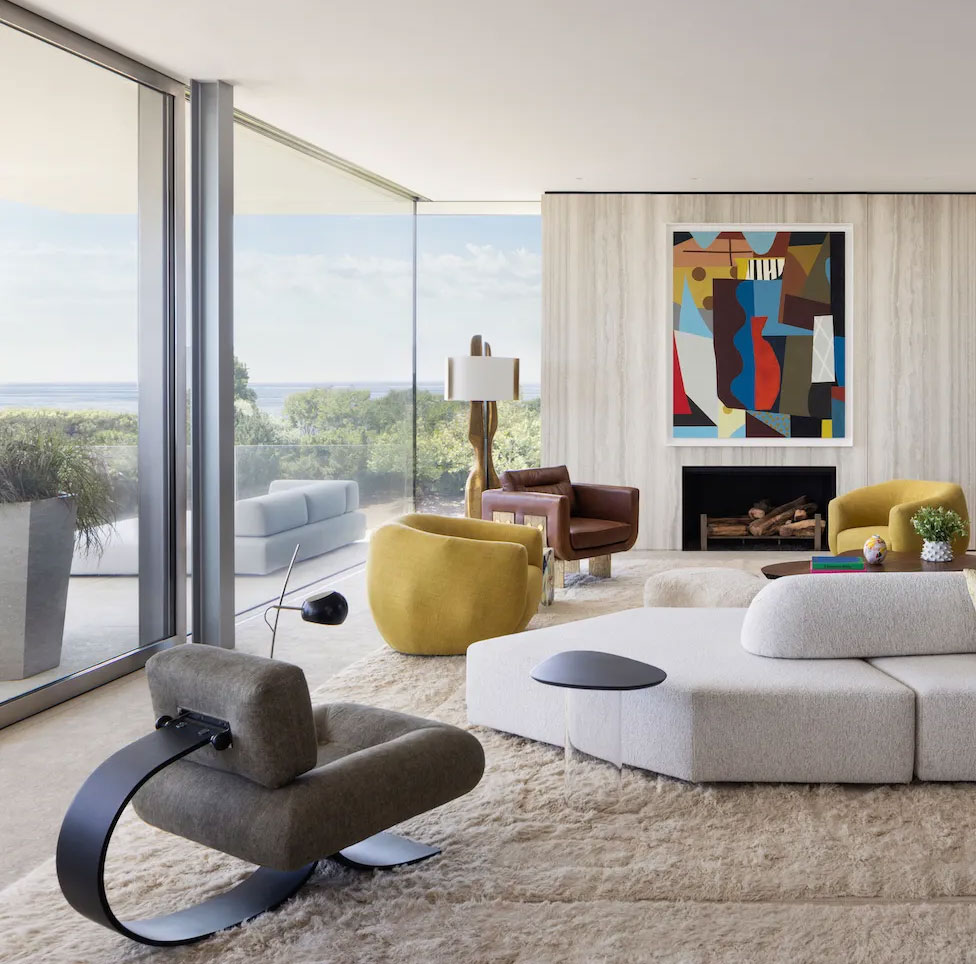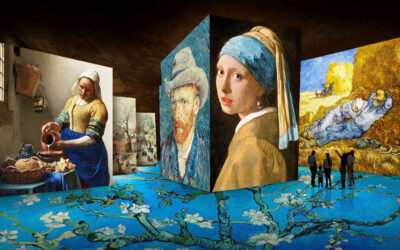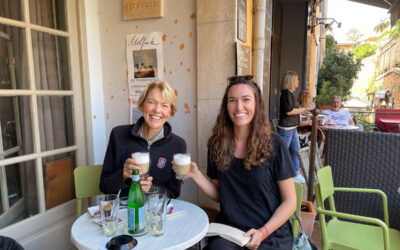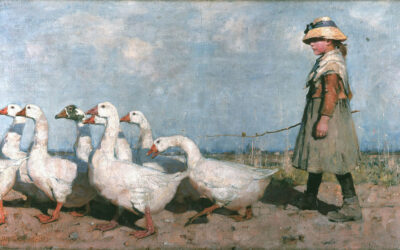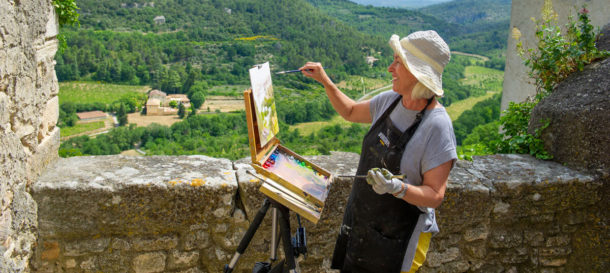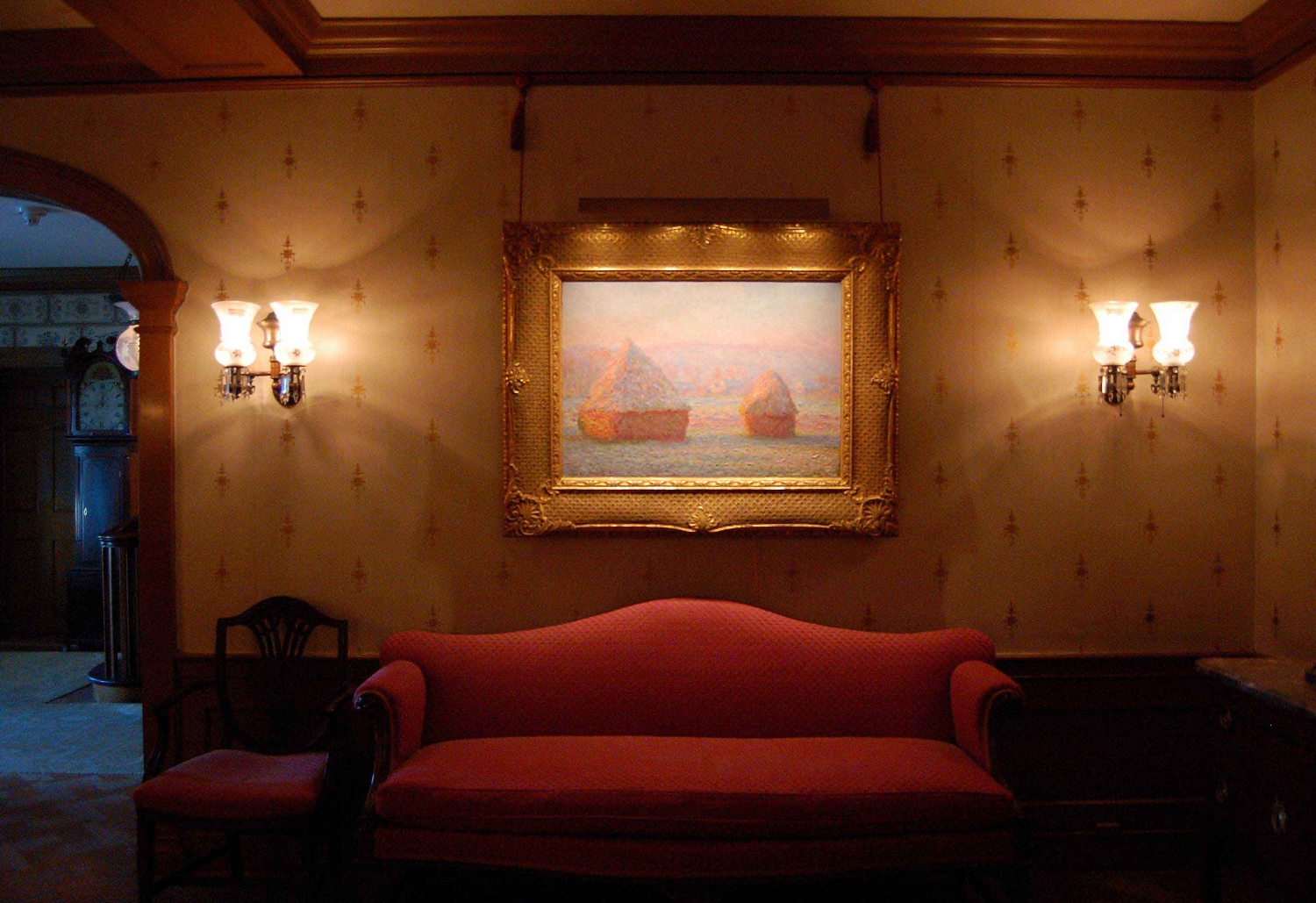
(Image: FineArtLight)
Art Illuminates your soul. Here are some tips about illuminating artwork.
When choosing where to hang a piece of art, we usually think in terms of space and the design of the room. We ask ourselves if it would look good in a certain location, maybe placed as a centerpiece, or would it be better as part of a grouping of smaller pieces, etc. etc. One of the most often overlooked factors on hanging artwork is lighting, yet it can make a huge difference to how the artwork looks. Under poor light, a painting can disappear into the shadows, and if left in direct sunlight, the artwork can be damaged forever. How many times have you gazed upon a piece of artwork and found yourself completely inspired? If that same painting had been hung in a place where it wasn’t correctly lit then it would not have had the same impact.
I own an original landscape by Rose Frantzen and when she handed it to me, she gave me this advice: “Make sure that you put this in a spot that gets a lot of bright light.” When I was selecting where to hang it I realized she was absolutely right. The painting had been painted in Provence under a clear Mediterranean sky. I was there when she painted it and witnessed her energetic process of capturing nature’s vibrance in color.
When it came to hanging the painting I remembered Rose’s advice. It was obvious that unless the painting received a similar light, the vibrant palette, contrasts, and color relationships that Rose created would be lost. When placed near the window the painting became alive with a symphony of color and light. The choice then became simpler; “Which window in which room?” Here are some tips for lighting artwork in your home.
Rose Frantzen painting plein air at her workshop.
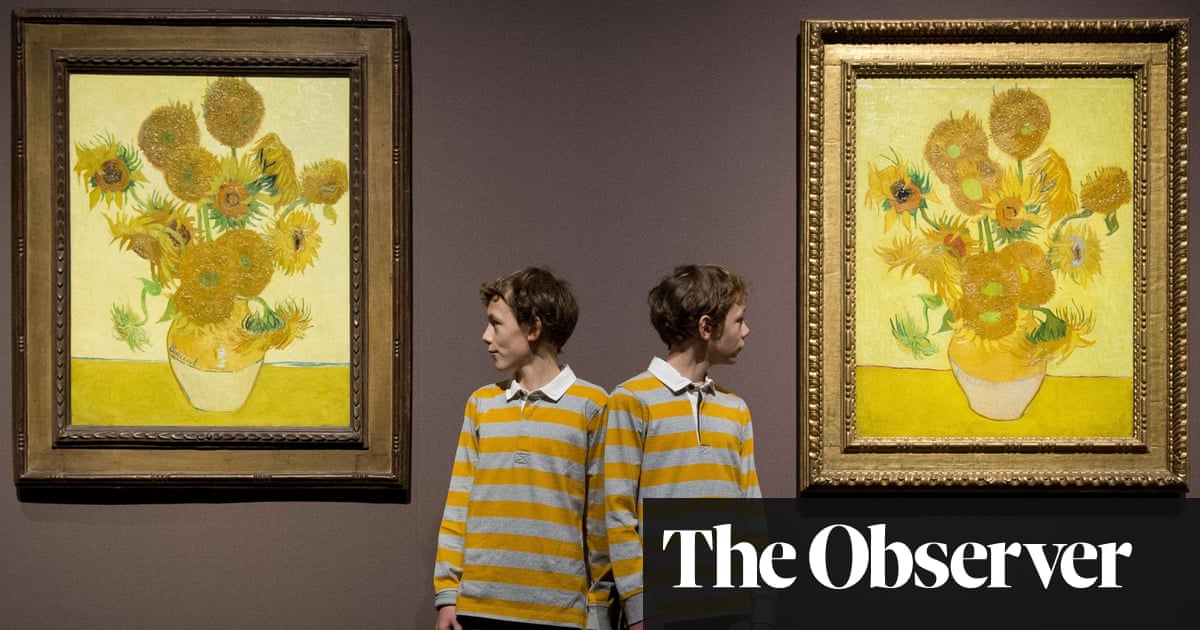
Image of Van Gogh’s Sunflower paintings under two different lights. Source: The Observer.
Nature’s Splendor:
There’s nothing quite like natural light, so embrace it to illuminate a painting that requires bright light like the one we’ve discussed. When selecting the spot, opt for a room that’s bathed in natural light, and choose a wall that receives diffused sunlight. This will allow the colors to be seen. Avoid hanging work in the path of direct rays. A brightly lit space is fine by day, but at night you need to embrace artificial lighting. Of course, this would be no place to hang delicate watercolors and other vulnerable pieces that would fade over time as the result of too much light.
A Symphony of Spotlights:
For those who desire control over lighting, spotlight fixtures can be your best friend. Illuminate your masterpiece with adjustable lights strategically positioned to highlight the artwork. Nowadays, bulbs come in various powers and light temperatures.
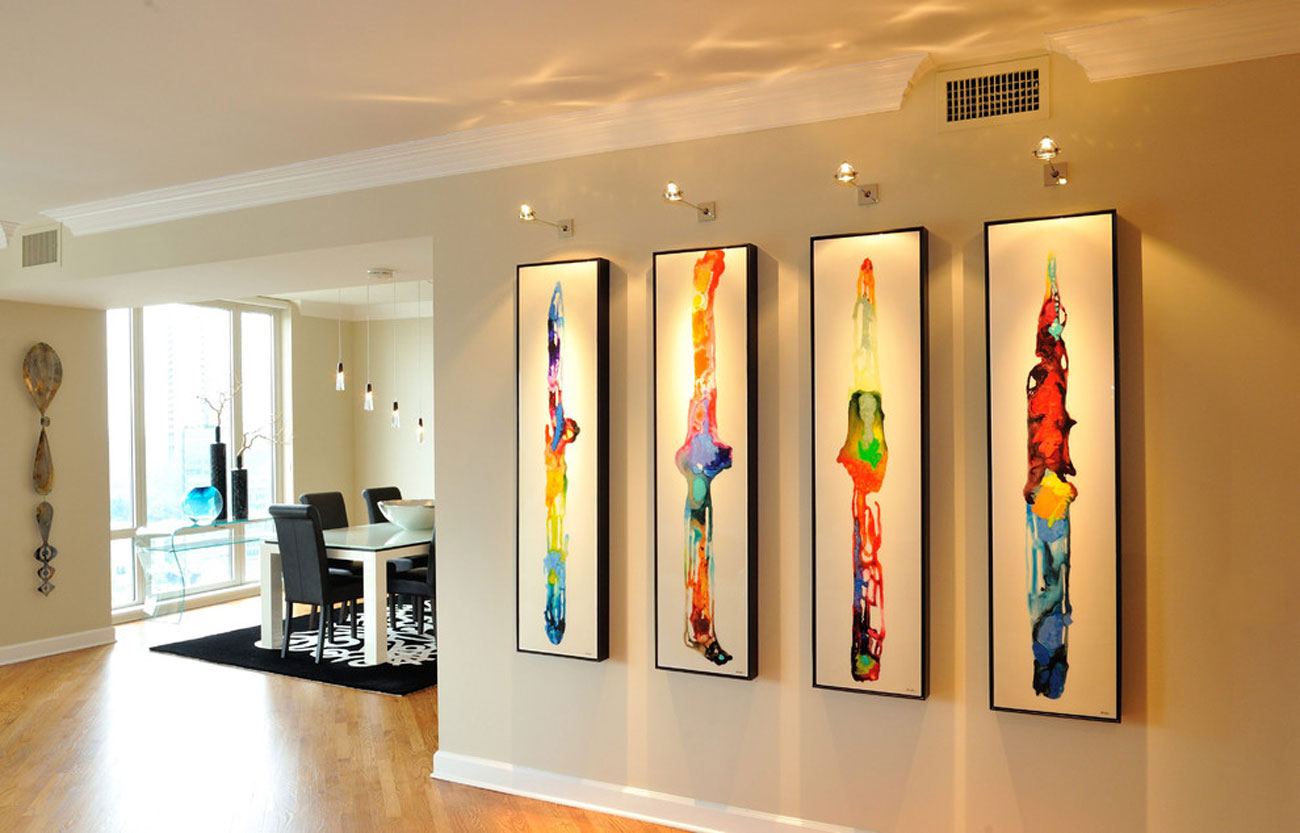
Cozy Corners and Accent Lights:
Transform a cozy nook into a mini art sanctuary by incorporating accent lighting. Choose a strategically dimmed corner and install wall-mounted or ceiling-mounted fixtures or even free-standing lights to create a spotlight effect. This option creates an intimate view, drawing attention to the painting and inviting contemplation.
Ambient Lighting :
If you’re aiming for that sophisticated gallery ambiance, consider ambient lighting. Install track lighting or wall sconces to evenly illuminate the entire wall, providing a consistent glow that complements the artwork. This method is perfect for creating a cohesive atmosphere in a room filled with multiple pieces. Choose LED lights with a high color rendering index (CRI) to ensure accurate color representation.
Avoid the Glare Trap:
If the artwork surfaces are slick, shiny or reflective and that includes works under glass, don’t hang them directly opposite windows or bright sources of light. This can cause distracting reflections, hindering the viewer’s ability to fully appreciate the artwork. Instead, you can position your painting at an angle to the light source, or at least out of its direct path. You can also opt for museum glass which is anti-reflective where glass is needed. To find that sweet spot for your art collection, test different positions or angles before committing to a final placement.
Happy hanging!
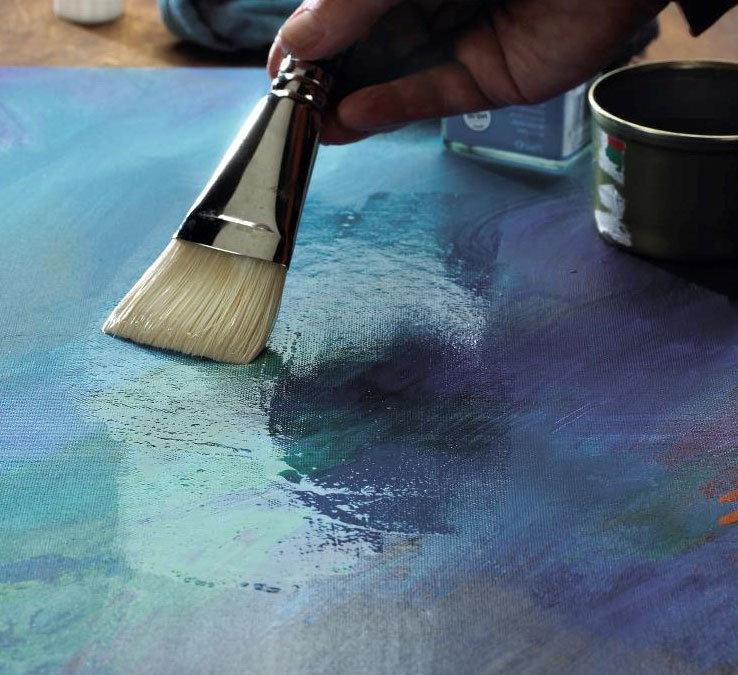
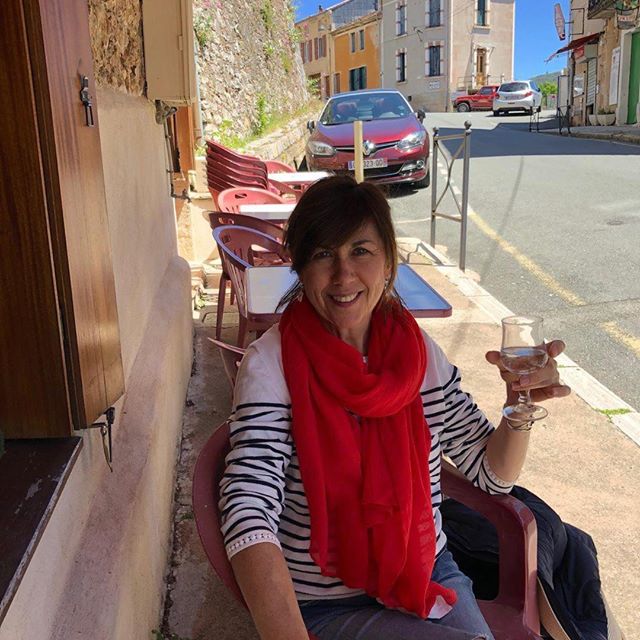
Blogger: Julie Snyder
Julie Snyder is a professional artist and also the programs director of Workshops In France. A native of Scotland, she is a seasoned traveler who splits her time between California and France. You can learn more about her role with Workshops in France here. And to see her artwork you can visit her website.
Check out more blogs about art workshops, tips and hacks for artists traveling in France and Scotland.
Vermeer to Van Gogh, Dutch Masters at Carrieres des Lumieres
This year we returned to the show titled; Vermeer to Van Gogh, The Dutch Masters and we were not disappointed. Included in the list of stellar painters from Holland are Vermeer, Rembrandt and Van Gogh. Imagine being transported inside these paintings when the projected masterpieces are monumental in size and you are able to observe the art pieces in ways you never imagined…
Family Affair in France
The art of traveling with family. It’s always a privilege to receive guests who decide to bring family members. We have discovered that one of the most enriching ways to experience a workshop or art retreat is to share it with a family member.
Glasgow Boys – A Scottish Art Rebellion
Their work, like other contemporaries around Europe, rejected traditional art styles and subjects and thrust the art scene into modernism. Like their counterparts on the Continent, these artists were ready to try something fresh and new when it came to painting.

